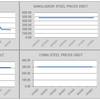Editor's Note
The debate centers on whether the Americans with Disabilities Act (ADA) applies at sea, particularly to ships entering the United States, and how to reconcile conflicts with foreign and international laws and safety regulations in the absence of any statutory or regulatory standards. The following is an excerpt of an analysis from the International Council of Cruise Lines:
“... neither the ADA nor any subsequent regulations have clarified precisely what foreign-built ships must do to reconcile accessibility with mandatory international safety standards. Numerous technical issues are associated with harmonizing accessibility and safety requirements for ships. The Safety Of Life At Sea Convention (SOLAS), which has been ratified by the United States, dictates particular design, construction and operation standards for oceangoing ships. These include maintenance of water tight compartments, fire safe zones, unobstructed emergency egress and mandatory participation in fire drills. Unlike buildings, ships must function as places of refuge in the remote event of a maritime emergency and do not have immediate access to shore side resources when on the high seas.
The complete absence of any statutory or regulatory framework for applying the ADA to foreign ships raises serious practical issues for cruise operators when trying to accommodate passengers with special needs.
Of the more than 100 foreign cruise ships visiting North America annually, some routinely embark or disembark passengers in U.S. ports, others do so occasionally, and still others only rarely schedule U.S.-based voyages. The ships vary in size, age, nation of construction and registry. The confusion over the extent of the ADA’s application in these varied contexts has fomented litigation in many jurisdictions by advocacy groups and individuals who, regardless of their good intentions, seek to impose their own accessibility standards on this international industry. Because of various contradictory lower court decisions, federal judges around the nation are being asked to guess what Congress intended to be the required level of accessibility, and as such we welcome guidance and clarification from the U.S. Supreme Court.”
-- Greg Trauthwein











